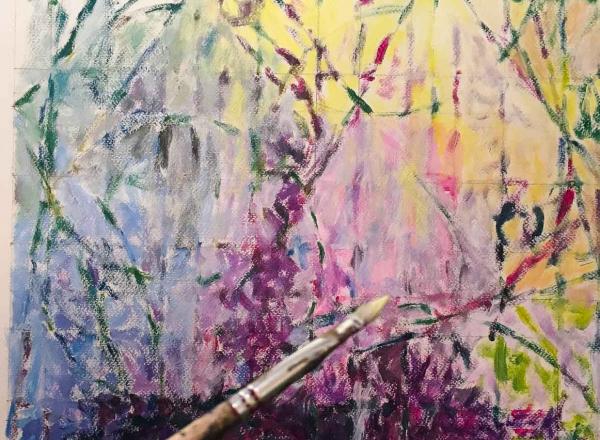When making art comes full circle

When I graduated from art college in the 90s, it was at a time when artistic expression, rather than form or technique, was all the rage. What you had to express, rather than how you did it, was what mattered. Artworks were valued on how original or, better still, provocative they were. The more whacky, far-fetched or raw the better. The practical part of my Fine Arts degree was focused on developing freedom of expression rather than acquiring technique or learning traditional skills. It was all about forging a style that stood out from your contemporaries and that you could verbally defend.
I wholeheartedly threw myself into being a contemporary sculptor and installation artist. Not only was it fun and exciting to be part of the contemporary movement at that time, it was also an important part of my creative development. It was what I now relate to as the “just do it” phase of my career. My brother and I still share a chuckle or two about the time he loyally came to one of my first exhibitions. He came to greet me across a dimly lit warehouse in London where a group of us final-year degree students were holding a one-night-art-happening. As he recognised me amongst the gathered people, he made a slightly relieved wave with his hand and then stepped right in the middle of my carefully poured milk-on-floor installation!
All artists go through different phases of creativity as they go through different phases of their life. My perspective is different from what it was twenty years ago. The shock and liberation value of seeing casts made in just about every kind of material possible, including human and animal excrement, of just about every human orifice possible has worn off for me. And yet I went to see a sculpture degree show last month and found myself having a quiet sigh when I saw that a group of students were still at it. Have we not ended up making endless versions of a once original idea? The “just do it” attitude, which I found so refreshing and cathartic at the time, today seems stale and to have become a bit of a bore. Practically every animal possible has been sawn in half, stuffed and then stuck to a wall or put in an observation tank in the name of art. I adored those artists that first did it for the impact it had on the art world at the time. So many fantastically “out there” pieces of work decanted out of that kind of “anything goes” movement; but today I am left feeling hollow and frustratingly uninspired by the “fast food” that it seems to have become.
When I picked up my career again as an artist, I decided to literally go back to the drawing board and learn traditional composition, form and technique. I wanted to learn how to draw and paint in a way that “worked” technically. I also wanted my creative practice to less be based on what is being expressed and more on how you apply yourself to produce a finished piece. I joined a weekly class taught by an artist who had rigorously studied the old masters’ works and their techniques. Mastering those skills is like learning a language: you need to practice a lot before it resembles anything like what you actually wanted to communicate. I have found it deeply grounding and surprisingly liberating to apply traditional rules of composition, form and structure to my work today. I get completely absorbed by the intricacies of how to prepare a palette and create a structure before starting a painting. I find “going by the rules” and “doing the maths” weirdly more cathartic for my creative process than going with the flow of what I feel or think on that particular day. Things you would never have heard me state a few years back!
We will always need to push against and break the rules put in place by previous generations to reinvent originality. But there is a reason that the techniques and rules put in place by great masters “work”: they are based on calculations that our brain understands and finds aesthetically pleasing. Without any kind of basis or structure, the language of art, just like any language, becomes nonsensical noise. Surely part of what makes visual art an “art” is its ability to communicate something without the need for verbal explanations. To present a personal perspective in a way that resonates understanding in others. In discussing with other artists, from varying fields and generations, I realise that a gathering number of us are all too keen to bring the practice of an art, with all that that stands for, back into our studios. Might a collective desire to bring back traditional technique become the backbone to the next generation of contemporary art…? Count me “in” if so.
Fiona Lee
July 7, 2016
Victoria James
July 9, 2016Fiona Lee
July 9, 2016
Victoria James
July 11, 2016Marieke Maesen
October 1, 2016